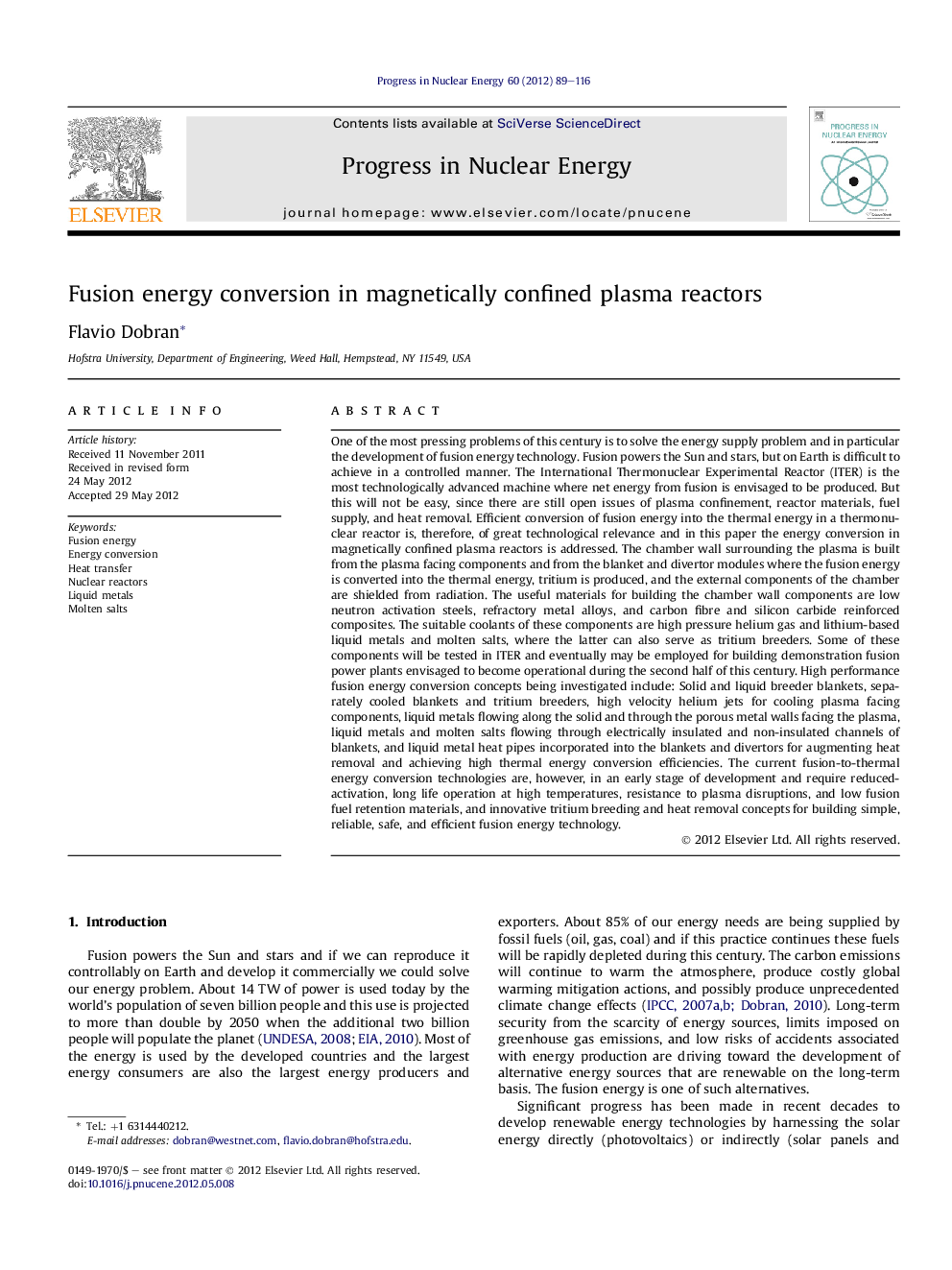| Article ID | Journal | Published Year | Pages | File Type |
|---|---|---|---|---|
| 1740814 | Progress in Nuclear Energy | 2012 | 28 Pages |
One of the most pressing problems of this century is to solve the energy supply problem and in particular the development of fusion energy technology. Fusion powers the Sun and stars, but on Earth is difficult to achieve in a controlled manner. The International Thermonuclear Experimental Reactor (ITER) is the most technologically advanced machine where net energy from fusion is envisaged to be produced. But this will not be easy, since there are still open issues of plasma confinement, reactor materials, fuel supply, and heat removal. Efficient conversion of fusion energy into the thermal energy in a thermonuclear reactor is, therefore, of great technological relevance and in this paper the energy conversion in magnetically confined plasma reactors is addressed. The chamber wall surrounding the plasma is built from the plasma facing components and from the blanket and divertor modules where the fusion energy is converted into the thermal energy, tritium is produced, and the external components of the chamber are shielded from radiation. The useful materials for building the chamber wall components are low neutron activation steels, refractory metal alloys, and carbon fibre and silicon carbide reinforced composites. The suitable coolants of these components are high pressure helium gas and lithium-based liquid metals and molten salts, where the latter can also serve as tritium breeders. Some of these components will be tested in ITER and eventually may be employed for building demonstration fusion power plants envisaged to become operational during the second half of this century. High performance fusion energy conversion concepts being investigated include: Solid and liquid breeder blankets, separately cooled blankets and tritium breeders, high velocity helium jets for cooling plasma facing components, liquid metals flowing along the solid and through the porous metal walls facing the plasma, liquid metals and molten salts flowing through electrically insulated and non-insulated channels of blankets, and liquid metal heat pipes incorporated into the blankets and divertors for augmenting heat removal and achieving high thermal energy conversion efficiencies. The current fusion-to-thermal energy conversion technologies are, however, in an early stage of development and require reduced-activation, long life operation at high temperatures, resistance to plasma disruptions, and low fusion fuel retention materials, and innovative tritium breeding and heat removal concepts for building simple, reliable, safe, and efficient fusion energy technology.
